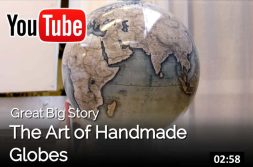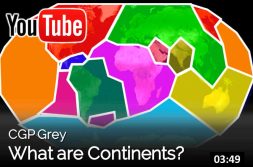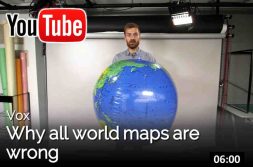Maps
Questions
1. Do you like maps?
2. Are you good at reading maps?
3. What do you think when you look at a map of your country?
4. Do you understand all of the symbols on a map?
5. What do you think when you look at a map of the world?
6. Have you ever got lost using a map?
7. Is the public transport map in your city very easy to read?
8. Could you draw a map of your country?
Videos
When Peter Bellerby couldn’t find the perfect handmade globe for his father’s 80th birthday, he took matters into his own hands. He spent the next few years learning and perfecting the lost art of globemaking, which turned
[more]
out to be a difficult, detailed process. Today, he runs Bellerby & Co Globemakers out of a small London studio with a team of 15 skilled craftsmen who create every masterpiece by hand.
[less]
Category: Art | Geography & Travel
Design legend Michael Bierut tells the story of the accidental success of one of the most famous maps in the world — the London Tube Map.
Category: Geography & Travel
Keywords: City transport | Maps
Let’s ask a Geologist what a continent is. The Antarctic, plate, the Australian plate, the Eurasian plate, the South American plate, the African plate.
Category: Geography & Travel
Keywords: Continents | Maps
Making accurate world maps is mathematically impossible.
Maps are flat representations of our spherical planet. Johnny Harris cut open a plastic globe to understand
Maps are flat representations of our spherical planet. Johnny Harris cut open a plastic globe to understand
[more]
just what it takes to turn a sphere into something flat.
His struggle to make a flat map out of the plastic globe is indicative of a challenge mapmakers have faced for centuries: It is mathematically impossible to translate the surface of a sphere onto a plane without some form of distortion.
To solve this problem, mathematicians and cartographers have developed a huge library of representations of the globe, each distorting a certain attribute and preserving others.
For instance, the Mercator projection preserves the shape of countries while distorting the size, especially near the north and south pole.
For a more accurate view of land area look at the Gall-Peters projection, which preserves area while distorting shape.
In the end, there’s not “right” map projection. Each comes with trade-offs, and cartographers make projection decisions based on the particular tasks at hand. But if you are interested in seeing an accurate depiction of the planet, it’s best to stick with a globe.
His struggle to make a flat map out of the plastic globe is indicative of a challenge mapmakers have faced for centuries: It is mathematically impossible to translate the surface of a sphere onto a plane without some form of distortion.
To solve this problem, mathematicians and cartographers have developed a huge library of representations of the globe, each distorting a certain attribute and preserving others.
For instance, the Mercator projection preserves the shape of countries while distorting the size, especially near the north and south pole.
For a more accurate view of land area look at the Gall-Peters projection, which preserves area while distorting shape.
In the end, there’s not “right” map projection. Each comes with trade-offs, and cartographers make projection decisions based on the particular tasks at hand. But if you are interested in seeing an accurate depiction of the planet, it’s best to stick with a globe.
[less]
Category: Geography & Travel



